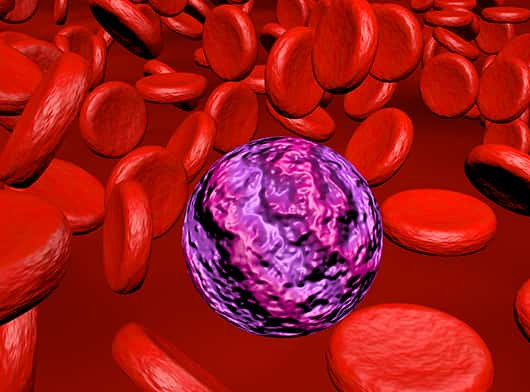Treatment of acute myelogenous leukemia depends on several factors, including the subtype of the disease, age, overall health and preferences. In general, treatment falls into two phases:
- Remission induction therapy : The purpose of the first phase of treatment is to kill the leukemia cells in your blood and bone marrow. However, remission induction usually doesn't wipe out all of the leukemia cells, so you need further treatment to prevent the disease from returning.
- Consolidation therapy : Also called post-remission therapy or maintenance therapy, this phase of treatment is aimed at destroying the remaining leukemia cells. It's considered crucial to decreasing the risk of relapse.
The above mentioned two phases might be having any one or more treatment procedures which are listed below:
- Chemotherapy : Chemo drugs can kill cancer cells or keep them from dividing. Might take these medicines by mouth, through an IV, or through a shot into another part of body.
- Radiation therapy :Your doctor might use high-energy radiation to kill cancer cells if they’ve reached your brain or bone or before you have a stem cell transplant.
- Stem Cell Transplant : The usual doses of chemotherapy drugs can cause serious side effects by damaging quickly dividing cells such as the bone marrow. Even though higher doses of these drugs might be better at killing leukemia cells, they are not given because the severe damage to bone marrow cells would cause lethal shortages of blood cells. Bone marrow transplant , also known as stem cell transplant, is a treatment to replace your diseased bone marrow with healthy stem cells that help you grow new bone marrow. Even though AML responds to chemotherapy, stem cell transplantation is necessary to reduce the chances of relapse.
The 2 main types of stem cell transplants are allogeneic and autologous.
- Autologous Transplant
- Allogeneic Transplant
In AML, mostly allogeneic transplant is done (stem cells are collected from a healthy donor- either HLA matched sibling or unrelated donor or even HLA mismatched sibling donor). High dose chemotherapy is given to the patient followed by infusion of stem cells collected from the donor.
- Targeted therapy :This uses drugs to attack specific genes and proteins involved with the growth and spread of cancer cells.
- Other medications : Drugs called arsenic trioxide (Trisenox) and all-trans retinoic acid (ATRA) target cancer cells in a type of AML called acute promyelocytic leukemia.
- Clinical trials : Some types of leukemia choose to enroll in clinical trials to try experimental treatments or new combinations of known therapies. AML is one type of blood cancer where a lot of clinical trials are going all over the world.
- Regular Follow Up :To remain in regular follow up with the treating hemato-oncologist to diagnose early relapse or need for further treatment.



.png)
